-
Posts
3,517 -
Joined
-
Last visited
-
Days Won
27
Content Type
Profiles
Forums
Blogs
Gallery
Events
Store
Posts posted by bigjarofwasps
-
-
George V 'M' 1915 Gold Sovereign Ring weighing a total of 20.1grams
I wonder what tales this would tell if it could only speak!!!!
A gift given to some ANZAC before de sailed to Gallipoli?
Used by Lawrence of Arabia, to bribe the Arabs?
Worn by someone from the LRDG or SOE, during WW2?
Kept after Op Granby by some SAS Trooper?
The mind boggles!!!!
I suppose we`ll never know, but it is nice to try and speculate. There are a few facts that we can be sure of.....
At some point in the last 90 odd years its made the journey from Australia to Great Britain. I`m not sure but I assume you`d be able to ascertain when the ring part was made by the hall marks. Is there anyone out there with knowledge of this sort of thing that could shine some light on it for us?

 0
0 -
" ... spring of 1942 he had actually received 24,000 gold sovereigns from the British to take to the hills; but he only departed that summer after exasperated SOE agents threatened to denounce him to the Axis ... case both British and German. EDES was also notorious for its lack of administrative cohesion. SOE commented on Zervas's `disregard of even elementary organisation' and noted that `he hopes for the best ... "
" ... political hearing, and he was not to know that, after a brief interdepartmental spat, the Foreign Office had vetoed any SOE plans to utilise him. Even assuming that he could recruit an Albanian Legion, the British ... failure in raising a revolt would largely have depended on `St George's cavalry': the quantity of gold sovereigns in his kitbag. The British Government essentially ignored him while trying ... "
" ... spring of 1942 he had actually received 24,000 gold sovereigns from the British to take to the hills; but he only departed that summer after exasperated SOE agents threatened to denounce him to the Axis ... case both British and German. EDES was also notorious for its lack of administrative cohesion. SOE commented on Zervas's `disregard of even elementary organisation' and noted that `he hopes for the best ... "
" ... clandestine radio in Athens in the spring of 1942) SOE tried to turn him into a mercenary, offering him 24,000 gold sovereigns (worth $200,000 at the time) to take ... "
" ... debated as a political issue. It was later made to appear in some quarters as a sinister reflection of SOE's atti- tude to the Greek King that it took such prompt action to assist ELAS ... operation was one of some confusion. They parted on good terms with Ares, giving him 250 gold sovereigns, and a letter to the EAM Central Committee, a mysterious entity which they were anxious to reconnoitre ... "
" ... printed money, causing inflation to soar, a problem that worsened as SOE began to flood the country with gold sovereigns meant to underwrite resistance activity. With the harvest reduced ...
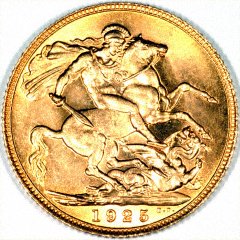
 0
0 -
" ... himself up economically, recalled that he had worked for payment in English gold sovereigns, which used to be a common medium of exchange in Greece. As soon as he was able, he converted these extremely vulnerable ... same phrase with which a shepherd expresses the incorporation of stolen sheep into his flock. Given that gold sovereigns were long a popular medium of exchange, "turning them into money" is as impenetrable ... "
" ... Chetniks, EDES had no desire to make a bad occupation worse by attacking the Axis."" Greece was far less susceptible to disintegration and hence revolution than was Yugoslavia, a second cause ... causing inflation to soar, a problem that worsened as SOE began to flood the country with gold sovereigns meant to underwrite resistance activity. With the harvest reduced by as much as a third ... "
" ... French Revolution which Napoleon claimed to champion, and particularly upheld the legitimacy of the deposed sovereigns. They declared that they were not fighting against France, but against the preponderance which Napoleon exercised . The allied ... gold sovereigns, known as 'the cavalry of St George' from their design of George and the dragon, played the same role as the Persian king's gold archers in city-state Greece ... "
" ... transfer to his credit at the Westminster Bank, Foreign Branch Office, London, 3,000 gold sovereigns, which were the subject of this action. In August 1939, the plaintiff contracted to supply 500 ... Roumania to the Greek Army and other business. In October 1940, Italy declared war on Greece. German troops began to gather on the Roumanian frontier, and Germans in civilian clothes ... "
" ... Londos' sister in Kolonaki. There, Londos would send them dangerous, and coveted, gifts: gold sovereigns and even fresh fish. It seems that despite George's earlier misgivings ... Greece. When the mild remonstrances of Tsouderos in London were brushed aside, George and Kanellopoulos became furious. These were enemy countries; Bulgaria was even one of the three occupying powers ... "
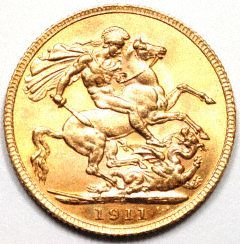
 0
0 -
" ... disruption of communications. Inflation continued to accelerate . The only currency to retain confidence was the gold sovereign , which had been shipped into Greece in large quantities by the British authorities to finance resistance activities ... Greece under its control. Although PEEA was careful not to claim that it constituted a rival government, it clearly posed a threat to the government-in- exile, whose influence within Greece ... "
" ... told him to go to Greece - he would like it. He went and stayed. He held the post at the university until his death a few years ago. Greece was in the throes of rampant inflation ... mattered was the gold sovereign. Anything worth buying would be paid in gold sovereigns. One went to the Bank of Greece laden with bank notes and changed one's drachmas into gold. I recall ... "
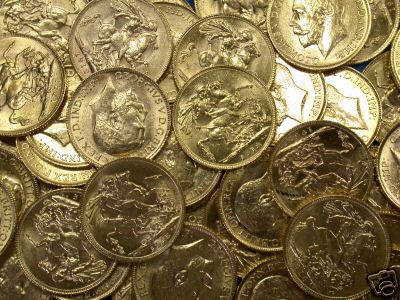
 0
0 -
Material damage was enormous, to Greece's transportation by land and sea, to railroad stock, harbors, airports and factories, that were used during the occupation, and were destroyed, just before the retreat of Nazi forces. Material losses amounted to hundreds of $billions. In addition, in March 1942, the Nazis "forcibly borrowed" 10,530,120 gold sovereigns from the Central Bank of Greece, as an interest-free loan. The value of that loan today, with 3% interest amounts to a hefty $17 billion. The damage to Greek economy, to the educational system, with elementary and middle school buildings requisitioned for stationing troops and military supplies, and disruption of Health Care delivery, were enormous.
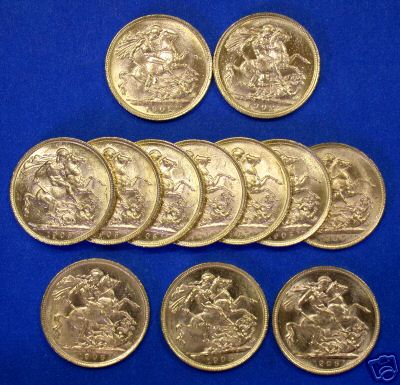
 0
0 -
1941
February
Secret transportation of the Bank's gold reserves to its branch in Herakleion, aboard the destroyers "Vasilissa Olga" and "Vasilefs Georgios".
22 April
King George II, the Prime Minister Emm. Tsouderos, and the Governor and Deputy Governor of the Bank of Greece, ?. Varvaressos and G. Mantzavinos respectively, flee Athens heading for Crete.
27 April
The Germans occupy Athens.
May
Amendment of the Bank's Statute, stipulating that the Bank will be considered as based at the headquarters of the official Greek Government abroad.
23 May
The fall of Crete marks the country's total occupation by German, Italian and Bulgarian troops. Each of the three occupation forces circulates its own currency unit: the Reichsmark, the Mediterranean Drachma and the Bulgarian Lev. Adventurous efforts to transport the gold reserves to a safe country. Flight of the country's leaders to Alexandria.
June
Relocation of the Bank's Administration and gold to Cairo.
July - August
The gold is transported to Pretoria.
1 August
Reinstatement of the drachma as legal tender.
19 September
The Governments of Italy and Germany appoint commissioners at the Bank empowered with the exclusive right to conduct the monetary and exchange rate policies. Requisitions, appropriations of the national product and mandatory offer to the occupation forces for purchase in inflationary money.
22 September
The Bank's Administration and the Greek Government arrive in London.
November
Starvation of the civilian population. The situation is aggravated further during the winter of 1941-42. The daily death toll from starvation exceeds 100.
December
Advances amount to 3.5 billion drachmas per month. Uncontrollable inflationary pressures. On the initiative of the British Government, an ad hoc inter-alliance committee is set up, to record war damages and post-war needs. Greece is represented by K. Varvaressos.
1942
January
Occupation expenses amount to 6-7 billion drachmas per month.
June
Occupation expenses rise to 200 billion drachmas per month.
July
A German financial committee, headed by Hermann Neubacher, arrives in Athens to solve the monetary problem.
1 December
Compulsory use of securities in all transactions, aimed at limiting currency in circulation.
1943
November
Emergence of hyperinflation. Transactions based on barter. Occupation authorities funnel English gold pounds and French gold twenty-franc coins into the Athens money market. Conference in Atlantic City, USA, for the founding of an inter-alliance organisation, the UNRRA.
December
Gold becomes the only medium of exchange and store of value.
1944
1-22 July
At the international conference in Bretton Woods, New Hampshire, 44 nations agree to establish the International Monetary Fund and the World Bank. Greece is represented by K. Varvaressos.
18 October
The expatriated Government returns to Greece. Speech by Prime Minister G. Papandreou at Syntagma Square, Athens, celebrating the country's liberation.
3-9 November
The Greek Government, the Bank of Greece and British experts agree on an economic stabilisation programme.
10 November
The country's fiscal and monetary system collapses. Inflationary bulge at full blast.
11 November
Launch of the new drachma, equivalent to 50 billion old drachmas.
1945
8 January
Failure of the stabilisation programme. Resignation of the Bank's Co-Governor and reinstitution of the rank of Deputy Governor.
1 April
UNRRA aid to Greece.
8 May
End of the war in Europe. Germany surrenders to the Allies.
4 June
Second stabilisation attempt: the Varvaressos Programme.
31 July
President Truman signs the Bretton Woods Agreement Treaty.
August
Confrontation between K. Varvaressos and private sector agents.
2 September
K. Varvaressos resigns from his position as Vice-President of the Government. Abandonment of all stabilisation efforts. September marks the beginning of a period of monetary anarchy, mass strikes, social upheaval and intense political crisis, which lasts until December.
December
Conference of the victors in Paris to determine war reparations. Greece is granted only 152.7 million US dollars (in kind) as compensation, instead of the 15.7 billion US dollars it had claimed.
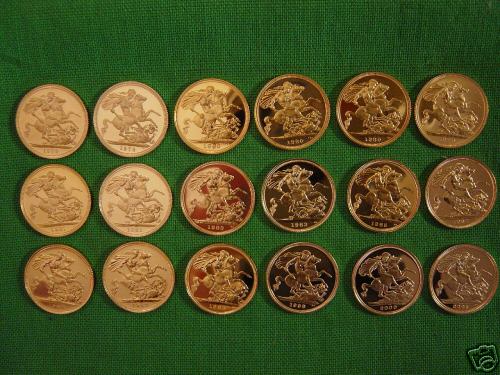
 0
0 -
In March 1942, the Nazis "forcibly borrowed" 10,530,120 gold sovereigns from the Central Bank of Greece, as an interest-free loan. The value of that loan today, with 3% interest amounts to a hefty $17 billion.
http://www.demokritos.org/TRIUMPH.htm
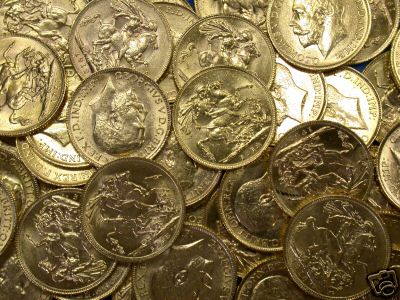
 0
0 -
-
There was one on Sky a few months back, I only caught the end of it. But again they were dving in a lake in Austria- at the bottom they found bundles and bundles of counterfeit pound notes. They had some old German guy with them, I think he was the guy that had made them, he said they were so well preserved, by the water. I assume that the Bank of England had them destroyed short afterwards?
I`ve just bought a copy of a book called Rommel`s Gold by Peter Haining, I`ll let you know if its any good.
Chris, putting the anti-climax aside was the programme any good?
There was another good one on Sky a few weeks ago, called Nazi Gold which was rather good. I also have a DVD that I bought off Ebay again called Nazi Gold which is very interesting!!
0 -
-
-
-
Gold standard
The gold standard is a monetary system in which the standard economic unit of account is a fixed weight of gold.
Under the gold standard, currency issuers guarantee to redeem notes in that amount of gold. Governments that employ such a fixed unit of account, and which will redeem their notes to other governments in gold, share a fixed currency relationship.
Supporters of the gold standard system claim it is more resistant to credit and debt expansion. Unlike a fiat currency, the money backed by gold cannot be created arbitrarily by government action. This restraint prevents the artificial inflation by the devaluation of currency. This is supposed to remove "currency uncertainty", keep the credit of the issuing monetary authority sound, and encourage lending. Nevertheless, countries under the gold standard underwent debt crises and depressions throughout the history of its use.
The gold standard is no longer used in any nation, having been replaced completely by fiat currency. It is still in private use by private institutions in the supply of digital gold currency, which use gold grams as money.
0 -
Dutch to use looted gold to aid its Shoah survivors
AMSTERDAM (JTA) -- Holland wants to use its $10 million share of an international gold pool to help its own Jewish community.
"Part of this gold was stolen from the Jews in our country," said Joop van Kemenade, chairman of the Dutch government committee investigating restitution of Jewish property.
His comment was to explain why Holland doesn't want to contribute the funds to a newly created international fund for Holocaust survivors.
The United States and Britain launched the international fund at last week's Nazi gold conference in London, held under the auspices of the Tripartite Gold Commission.
The conference was geared in part to determine how 5.6 tons of residual gold, currently worth between $55 million and $60 million, should be distributed by the commission.
The United States, Britain and France created the commission after World War II to distribute looted Nazi gold back to its rightful owners.
Stuart Eizenstat, the Clinton administration's point man on the Nazi gold issue, has offered the Dutch the option of spending $10 million from the new fund on projects for Dutch survivors, provided that Holland agrees to participate in the fund.
Nine countries have so far committed more than $15 million to the fund. The United States pledged $4 million, rising to $25 million if Congress approves. And Britain said it would contribute $1.7 million.
Luxembourg, Croatia, Greece, Poland and Austria -- which all have claims to the Tripartite gold -- said they were ready to transfer part or all of their claims to the new fund. Brazil and Argentina also said they plan to make donations.
France, like Holland, has indicated that it would not contribute its share to the fund -- some $21 million -- but instead give it to its own Jewish population.
Whether the United States, Britain and France will agree to the Dutch plan is uncertain, but Dutch Jewry is already debating how to distribute the funds.
0 -
Divers start search for looted gold
An international team of divers has been given the go-ahead to search for sunken treasure taken from Greek Jews by a Nazi officer.
Searchers believe $2.4 million worth of gold, jewels, and other valuables were aboard a ship scuttled in 1943 by a Nazi SS officer who demanded payments from Jews to avoid sending them to death camps. The officer never kept his promise, and nearly the entire Jewish community in Greece was wiped out during World War II.
The team of 12 divers has begun their search from the port of Kalamata, 175 miles south-east of Athens. Permission was granted for a five-day search, which will concentrate on the area around Skhiza Island off the south-western tip of the Peloponnesus, port authorities said last Thursday.
Underwater searches -- and even scuba diving expeditions -- are prohibited without permits in most areas of Greece to avoid the theft of antiquities.
The reputed treasure was assembled by Max Merten, an SS officer. Searchers believe Merten sank the ship, apparently intending to recover the loot later.
Merten returned to Greece in 1958 and was arrested. He was convicted as a war criminal, but was released under a government amnesty.
The Central Board of Jewish Communities, one of the search organisers, got information on the wreck's possible location from a Greek man who claimed to have been imprisoned with Merten.
Fifty percent of any treasure recovered will belong to Greece. The rest will be divided between the Jewish board and the informant. Claims also may be filed by survivors of those who died on the ship.
0 -
Peter,
I think you have to make payments in Iraqi Dinar, in order to get in on the action!!!!

Maybe they killed all the crews of the ship, whole villages wiped out etc,etc. Interestingly no one has ever said " Hey, what ever did happen to the 1 ton solid gold Budda, we used to have?".
When I`ve read the book, I`ll get back to you.....
Gordon.
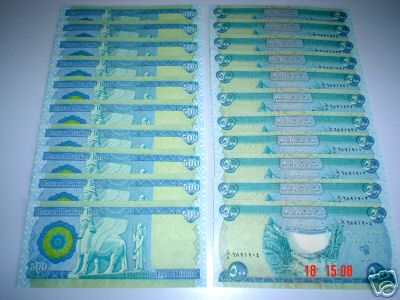
 0
0 -
Yamashita's Gold - Eyewitness
Reveals Truth Of Fabulous
WWII Hidden Treasure
By Sterling and Peggy Seagrave
In the closing months of World War II, in the Philippines, several of Japan's highest ranking imperial princes hid tons of looted gold bullion and other stolen treasure in caves and tunnels, to recover later. This was the wealth of 12 Asian countries, accumulated over thousands of years.
Expert teams accompanying Japan's armed forces had systematically emptied treasuries, banks, factories, private homes, pawn shops, art galleries, and stripped ordinary people, while Japan's top gangsters looted Asia's underworld and its black economy.
There were 175 ''imperial'' treasure sites hidden throughout the Philippines. When American tanks were close, the chief engineers of those vaults were given a farewell party 67 metres underground in Tunnel 8 in the mountains of Luzon, stacked with row after row of gold bars. As the evening progressed, they drank great quantities of sake, sang patriotic songs and shouted banzai (long life).
At midnight, General Yamashita Tomoyuki and the princes slipped out, and dynamite charges were set off in the access tunnels, entombing the engineers. Their vaults would remain secret. The princes escaped to Tokyo by submarine, and three months later General Yamashita surrendered to American troops. Japan had lost the war militarily, but the princes made certain Japan did not lose financially.
This grisly event has remained unknown until now, and the hidden treasure was brushed off as a fanciful legend of ''Yamashita's Gold''. But an eyewitness to the entombment has taken us there and given us his personal account. During the war, Ben Valmores was the young Filipino valet of a senior prince, who was in charge of closing all imperial treasure sites in the Philippines. A sometimes sentimental man, the prince spared Ben's life and led him out of Tunnel 8 just before the dynamite was detonated.
Japan's looting of Asia was overseen by [then-emperor] Hirohito's brother Prince Chichibu. His organisation was codenamed kin no yuri (Golden Lily), the title of one of the emperor's poems. Other princes headed different parts of Golden Lily across the conquered territories. Eventually, Japanese sources told us that Ben's wartime master was prince Takeda Tsuneyoshi, first cousin of Hirohito and grandson of emperor Meiji.
In 1998, we tested Ben with 1930s photographs of many princes, all the names removed, and he instantly identified prince Takeda, Hirohito's brother prince Chichibu and other princes.
Ben said he had spent time with each of them, bringing them food, tea and cigarettes while they inventoried each treasure site. When he saw our photo of Prince Takeda, Ben froze, then began softly crooning the Japanese folk song Sakura, Sakura (Cherry Blossoms), which he said Takeda often sang to himself.
In the final stages of work on a biography of Japan's imperial family titled The Yamato Dynasty, we were told that in October 1945, American intelligence agents learned where some of the Japanese loot was hidden in the Philippines, and quietly recovered billions of dollars worth of gold bullion, platinum, and loose diamonds. This information, if true, revealed the existence of an extraordinary state secret, something the United States Government kept from its own citizens for more than half a century. There was no time to include this in the biography. It had to be investigated separately. Here is some of what we have since learned:
After surrendering on September 2, 1945, General Yamashita was charged with war crimes over gruesome atrocities committed in Manila under the order of an admiral, while Yamashita had ordered withdrawing troops to leave the city unharmed. During his trial, there was no mention of plundered treasure, or of looting during the war.
But we now know there was a hidden agenda. Because it was not possible to torture General Yamashita physically without this becoming evident to his lawyers, members of his staff were tortured. His driver, Major Kojima Kashii, was given special attention. In charge of the torture of Major Kojima was a Filipino-American intelligence officer named Severino Garcia Santa Romana, whose friends called him Santy. He wanted the major to reveal each place where he had taken Yamashita, where bullion and other treasure was hidden for recovery after the war. Supervising Santy during the torture was Captain Edward Lansdale, later one of America's best known ''Cold Warriors''.
Early that October, Kojima broke and led Lansdale and Santy to more than a dozen Golden Lily treasure vaults in the rugged country north of Manila. What they found astounded everyone from General Douglas MacArthur all the way up to the White House. After discussions with his cabinet, President Harry Truman decided to keep the recovery a state secret.
Santy's ensuing recoveries greatly altered America's leverage during the Cold War. According to senior US government officials and high-ranking US Army officers, the Truman administration set this treasure aside along with Axis loot recovered in Europe, as a secret political action fund to fight communism in the Cold War.
Crudely put, it would be used to bribe statesmen and military officers, and to buy elections for anti-communist political parties. The idea for a global political action fund based on war loot had originated with US secretary of war, Henry Stimson. During the war, Stimson had a brain-trust thinking hard about recovered Axis plunder, and how it should be handled after the war. Their solution was to set up what is informally called the ''Black Eagle Trust'', after the black eagle emblem of Hitler's Reichsbank in Berlin.
The Black Eagle Trust was first discussed in secret during July 1944, when 44 nations met at Bretton Woods, New Hampshire, to plan the post-war economy. This was confirmed to us by a number of high-level sources, including former CIA deputy director Ray Cline, who knew about Santy's recoveries in 1945, and continued to be involved in attempts in the 1980s and 1990s to hide blocks of Japanese war loot still said to be in the vaults of banks in New York.
In November 1945, General MacArthur strolled down row after row of gold bars stacked two metres tall during a tour of vaults opened by Santy. >From what was seen in these vaults alone, it was evident that over a period of years Japan had looted billions of dollars in treasure from all over Asia.Much of this plunder had reached Japan overland earlier, from China through Korea, but the rest was hidden in the Philippines, unable to be shipped to Japan by sea because of the successful US submarine blockade.
According to Ray Cline and others, between 1945 and 1947 the gold bullion recovered by Santy and Lansdale was moved discreetly to 172 accounts at banks in 42 countries.
There were important reasons for all this secrecy. If the recovery of this huge mass of stolen gold was known only to a trusted few, the countries and individuals that had been plundered could not lay claim to it. Truman recognised that the very existence of so much black gold, if it became public knowledge, would cause the metal's fixed price to collapse. But as long as the gold was kept hidden, prices could be maintained and currencies pegged to gold would be stable. Meanwhile, the black gold would serve as a reserve asset, bolstering the prime banks in each country, and strengthening the anti-communist governments of those nations.
To hide the existence of all this treasure, Washington had to tell a number of lies. Especially lies about Japan, which had stolen most of the gold. America wanted Japan to become its anti-communist bastion in Asia, where the mainland was being overrun by communists. If American conservatives and Japanese conservatives were to ally effectively against communism, they had to begin by enlarging their financial resources for the Cold War.
Above all, the source of much of this hidden wealth must never be acknowledged. Washington had to insist, starting in 1945, that Japan never stole anything, and was flat broke and bankrupt when the war ended. Here was the beginning of many terrible secrets.
Because they remained ''off the books'', these enormous political action funds got into the wrong hands, where they remain to this day. We can reveal that in 1960, then vice-president Richard Nixon ''gave'' one of the biggest of these political action funds, the US$35-billion (about HK$272 billion) M-Fund, to leading members of Japan's Liberal Democratic Party (LDP). In return, he is believed to have sought their support for his presidential campaign that year.
The M-Fund, now said to be worth more than US$500 billion, is still controlled by members of the LDP.
Officially, we are told that Japan's wartime elite the imperial family, the zaibatsu (large industrial business conglomerates), the yakuza (Japanese mafia) and the ''good'' bureaucrats ended the war as impoverished victims of a handful of ''bad'' military zealots. We are told that Japan was badly damaged and impoverished, barely able to feed itself at war's end.
In fact, Japan emerged from the war far richer than before, and with remarkably little damage, except to the homes of millions of ordinary Japanese who did not count, at least in the view of their overlords.
Evidence of Golden Lily loot comes also from straightforward legal actions in America. Such simple things as the probating of the will of Santa Romana (Santy), verification of his tax records, and legal evidence of his fortune deposited in the US, Switzerland, Hong Kong and elsewhere, provide hard proof that the world is awash with clandestine bank accounts growing out of Golden Lily.
Other lawsuits in the US prove that Golden Lily war loot was indeed hidden in the Philippines. Rogelio Roxas, a Filipino locksmith, found a one-tonne solid-gold Buddha and thousands of gold bars hidden in a cave near Baguio only to have it stolen from him by President Ferdinand Marcos. Roxas was subsequently tortured and died in suspicious circumstances. Some believe he was murdered. In 1996, a US Federal Court awarded his heirs a judgment of US$22 billion against the Marcos estate.
As the 1951 Peace Treaty was skewed by secret deals, thousands of Japan's victims have been deprived of any compensation for their suffering. According to Article 14 of the Treaty: ''It is recognised that Japan should pay reparations to the Allied Powers for the damage and suffering caused by it during the war. Nevertheless it is also recognised that the resources of Japan are not presently sufficient.'' To reinforce the claim that Japan was broke, Article 14 noted that ''the Allied Powers waive all reparations claims of the Allied Powers and their nationals arising out of any actions taken by Japan...'' By signing the Treaty, Allied countries concurred that Japan's plunder had vanished down a rabbit hole, and all Japan's victims were out of luck. In return for going along with the Treaty, the Allies received portions of the gold bullion recovered by Santy.
We have evidence from former CIA deputy director Cline that the gold bullion Santy and Lansdale recovered was secretly moved to national treasuries and prime banks in more than 42 countries, including Great Britain. We also have evidence from British archives confirming this.
More than half a century later, the last battle of the Pacific War is being waged in courts in the US and Japan where surviving prisoners of war, slave labourers, comfort women and civilian victims of Japan have filed billion-dollar lawsuits to win compensation so mysteriously denied them after the war. In 1995, it was estimated that there were 700,000 victims of the war who had still received no compensation.
Today, their numbers are dwindling rapidly because of age and illness. Backing them is an extraordinary coalition, including international law firms with years of experience, fighting for compensation from German industries and Swiss banks, for crimes committed and money looted during the Nazi Holocaust.

 0
0 -
Corporal John Cosby killed in Iraq
17 Jul 06
It is with immense sadness that the Ministry of Defence must confirm the death of Corporal John Johnston Cosby in Iraq on Sunday 16 July 2006.
Corporal John Cosby
Corporal Cosby, 1st Battalion The Devonshire and Dorset Light Infantry (1DDLI), died as a result of gunshot wounds following an operation by British Forces to apprehend a key terrorist leader and accomplice in a suburb of North Basra. During the course of the operation British military personnel came under small arms fire and two soldiers sustained gunshot wounds. Sadly, Corporal Cosby subsequently died as a result of his injuries.
Corporal John Cosby was born in Belfast on 12 April 1978 and lived there until he was seven years old. His family moved to Exeter in 1985 where he spent his early years before joining 1DDLI in 1998.
He started his military career as a rifleman in an Armoured Infantry platoon in Warminster before moving to London with the Battalion for ceremonial duties. During this time he served on a six month tour of South Armagh after which he was promoted to Lance Corporal.
When the Battalion was posted to Ballykinler, Northern Ireland, Corporal Cosby was selected from the top soldiers in the Battalion to attempt selection for the Close Observation Platoon (COP). He passed the course with flying colours and went on to spend two years as second in command of a four man team on operations in the Province. He excelled in this role and it soon became obvious that he was ready to attend the Section Commanders’ Battle Course in order to earn promotion to full Corporal. A capable and natural junior commander, he gained a rare Instructor’s Grade Pass; a great accolade, as anybody who has done this exceptionally demanding course will know. On return to the Battalion he joined the Reconnaissance Platoon, a post reserved for the top percentage of infantry soldiers, this time achieving a Distinction on his gunnery course.
Whilst in Iraq, Corporal Cosby’s experience, enthusiasm and style made him an obvious choice to be a team commander in the Brigade Surveillance Company. He excelled on the second gruelling Covert Surveillance Course and became well respected by instructors, superiors and subordinates alike. Over recent months he showed uncompromising professionalism in all aspects of his work, rising naturally to the challenges that the demanding operational theatre poses. 1st Battalion The Devonshire and Dorset Light Infantry, based in Catterick, North Yorkshire, is currently three months into a six-and-a-half month tour of Iraq as part of 20th Armoured Brigade.
Corporal Cosby, known as George to his friends, was held in great affection by all who worked with him and those that knew him. He had a relaxed confidence and a manner that was immediately appealing. ‘Mateship’ was important to him and the value in which he held his friends was reciprocated with equal strength. He valued the responsibility he felt for his peers and his subordinates more than his own well-being. Early on in the tour he said to a fellow team commander, "as long as my team goes home safely and my friends go home safely, my job is done".
John was very compassionate and there was something infectious in him that people couldn’t help but like: his determination, his awkward sitting style, his scruffy appearance, his inability to tan even in the desert, his honesty, his lack of sporting prowess, the constantly burning cigarette, the regular mickey-taking of himself and others, his sharp, intelligent wit, his professionalism and his generosity.
"John’s sense of humour was perhaps his most memorable characteristic. His Northern Irish wit meant that a clever observation or delightfully unexpected turn of phrase was never far below the surface. He always saw the lighter side of a situation; he instinctively understood that humour is a force multiplier."
Lieutenant Colonel Toffer Beattie
Cpl Cosby's Commanding Officer, Lieutenant Colonel Toffer Beattie, said:
"It is with the deepest regret that I have to announce the death of Corporal John Cosby. He died this morning, 16 July 2006, as a result of gunshot wounds received as he and his team were engaged by militia gunmen during an operation in Basra City.
"Corporal Cosby and his team were part of the isolation force of a major arrest operation. Following the operation a terrorist who has masterminded many lethal attacks on Multi National Forces was detained and a detailed search of the premises was underway.
"It was at this point that a number of gunmen ambushed Corporal Cosby’s team. In the ensuing fire fight Corporal Cosby was fatally wounded. He was evacuated by helicopter but died soon after reaching the Field Hospital.
"Corporal Cosby, known to all as George (or more commonly as ‘Gorgeous’ George), was a monumental Battalion personality. An Ulsterman in a West Country Regiment he was always going to stand out, but he did so for all the right reasons. First and foremost he was an infantry Junior Non-Commissioned Officer in the finest tradition.
"A long term member of the Reconnaissance Platoon he was tough, determined and a talented low-level tactician. He was no spring chicken but pure willpower and an absolute commitment meant he kept up with the very best.
"John’s sense of humour was perhaps his most memorable characteristic. His Northern Irish wit meant that a clever observation or delightfully unexpected turn of phrase was never far below the surface. He always saw the lighter side of a situation; he instinctively understood that humour is a force multiplier.
"In Iraq Corporal Cosby was a Team Commander with the Brigade Surveillance Company. Hand selected for the task, put through the most demanding selection and trained in specialist techniques, his Company have consistently been in the vanguard of the most important operations so far this deployment.
"It was on such an operation that he was fatally wounded. From initial reports, it is abundantly clear that John was doing his job superbly. He was leading from the front, he was putting the success of the mission and the safety of his men before his own, just as we would have expected from such a well loved and respected soldier.
"John was unmarried. Our deepest sympathy goes out to his family, particularly his mother and sister to whom he was very close. He will be sorely missed by the Battalion and the wider Regimental family."
Corporal Cosby’s mother Jean has issued the following statement on behalf of his family:
"Johnston was a great and loving family man. He was an amazing son, brother, uncle and nephew. His sense of humour and bubbly personality will be missed by all of his family and everyone who knew him. His memory will live in all our hearts forever."
The family have asked that its privacy be respected at this tragic and difficult time.

 0
0 -
Pretoria Mint South Africa
The Pretoria Mint in South Africa issued gold sovereigns from 1923 to 1932. It uses the mintmark "SA".

 0
0 -
-
Perth Mint, Australia
The Australian Mint at Perth only struck gold sovereigns for 33 years from 1899 and 1931.
Some of these are scarce, some rare.
Dates Produced
Perth Mint sovereigns were produced in the following years:- Date Mintage
1899 690.992
1900 1,886,089
1901 2,889,333
1902 4,289,122
1903 4,674,783
1904 4,506,756
1905 4,876,193
1906 4,829,817
1907 4,972,289
1908 4,875,617
1909 4,524,241
1910 4,690,625
1911 4,373,165
1912 4,278,144
1913 4,635,287
1914 4,815,996
1915 4,373,596
1916 4,096,721
1917 4,110,286
1918 3,812,884
1919 2,995,216
1920 2,421,196
1921 2,314,360
1922 2,298,884
1923 2,124,154
1924 1,464,416
1925 1,837,901
1926 1,313,578
1927 1,383,544
1928 1,333,417
1929 1,607,625
1930 1,915,352
1931 1,173,568
Total 105,694,846

 0
0 -
Ottawa Mint, Canada
The Canadian Mint at Ottawa only struck gold sovereigns for ten years between 1908 and 1919.
All of these are scarce, some rare, and two of the dates are extremely rare.
The Ottawa mint was set up to coin the gold, which had only recently been discovered in British Columbia and the Yukon, into gold sovereigns. It opened on January 2nd 1908, and this was the first date of British gold sovereign to be minted in Canada, although it is one of the two extremely rare dates.
Naturally the mint produced other coins in silver and base metal, the first coin struck at the Canadian Mint was a fifty cent piece. The mint still operates today, and is known as The Royal Canadian Mint. It was made a Crown Corporation on April 1st 1969.
Dates Produced
Canadian Mint sovereigns were produced in the following years:- Date Mintage
1908 646
1909 16,300
1910 28,020
1911 257,048
1913 3,717
1914 14,900
1916 6,119
1917 58,875
1918 106,570
1919 135,957
Total 628,152
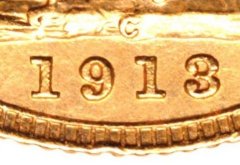
 0
0 -
Bombay Mint, India
The Indian Mint at Bombay only struck gold sovereigns for one single year 1918.
Dates Produced
Bombay Mint sovereigns were produced in the following year:- Date Mintage
1918 1,294,372
Total 1,294,372
http://www.cruzis-coins.com/sovs/1918i.html
During World War I, as a unique and temporary wartime measure, gold sovereigns were struck in India at the Bombay mint. Prior to this time and afterward, the Bombay mint only produced the gold blanks upon which sovereigns were struck at other British mints.
Featuring the distinctive “I” mint mark on the reverse, just below the horse’s hooves on the ground line and just above the date, these are the only British Gold Sovereigns struck in Britain’s largest and most important colony.
Although the striking took place between August 15, 1918 and April 22, 1919, all coins struck bear the 1918 date. A total of 1,295,000 coins were struck, but most have been lost to the ravages of time, making this an especially scarce issue.
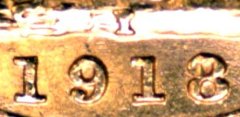
 0
0 -
Mint Mintmark
London None
Sydney S
Melbourne M
Perth P
Ottawa C
Bombay I
Pretoria SA
Since 1871, British sovereigns were struck at branch mints, in addition to the Royal Mint in London.
The first branch mint to strike sovereigns was Sydney in Australia. It made good sense to produce British sovereigns close to the gold mining source areas, rather than ship the gold to London to be made into coin, then possibly ship it back again.
In 1872, the Melbourne mint followed.
The Perth, Australia mint started production of sovereigns in 1899, and the Ottawa mint in Canada started in 1908.
The Bombay mint in India struck sovereigns in just one year, 1918, and the Pretoria mint in South Africa started production in 1923.

 0
0





History of the Gold Sovereign
in Coins & Commemorative Medallions
Posted
I found this link, which might help age the ring?
http://www.jewellerycatalogue.co.uk/gold_j...ay_hallmark.php